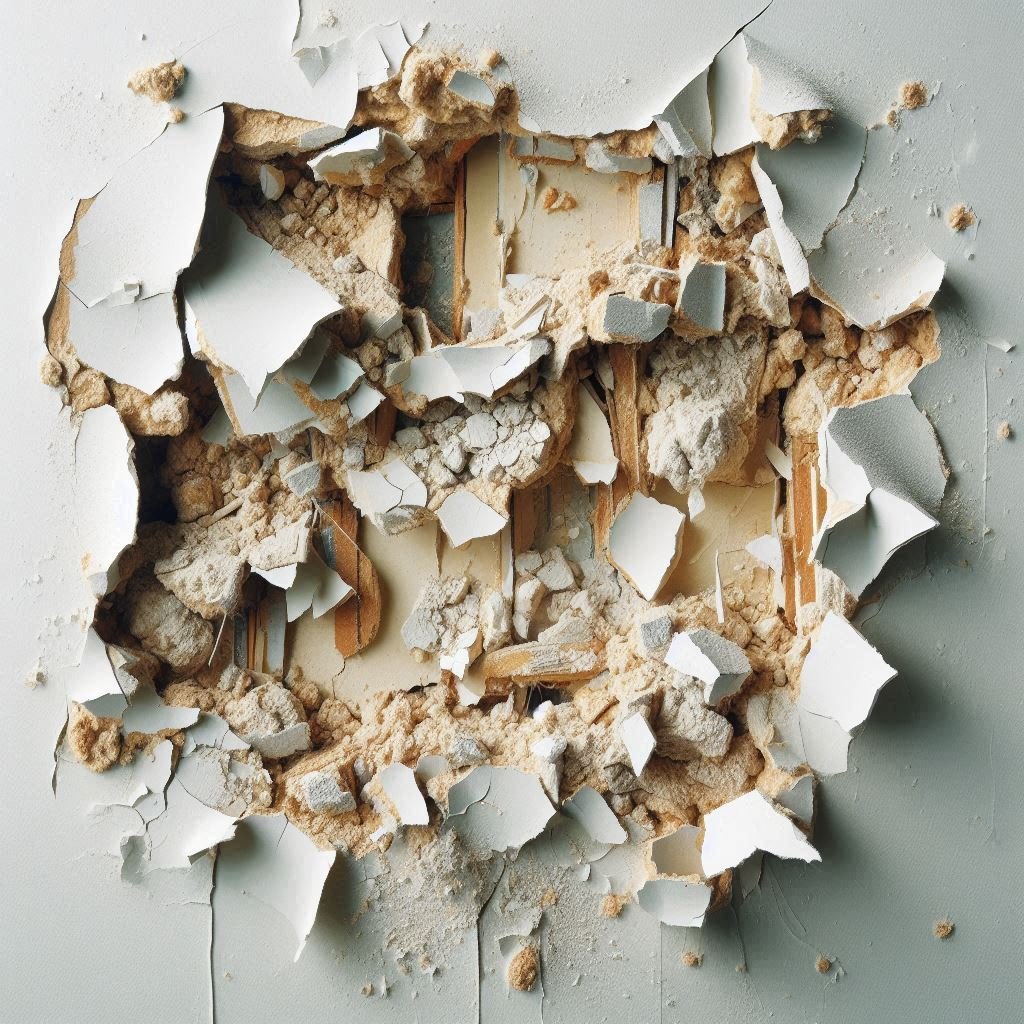Learn How to Repair Drywall Effectively
Discover expert techniques for repairing drywall like a pro. From patching holes to smoothing out cracks, learn step-by-step instructions and handy tips in this comprehensive guide on how to repair drywall effectively.
Welcome to the ultimate guide on effective drywall repair—a must-read for both DIY enthusiasts and homeowners. Whether you're faced with unsightly holes, bothersome cracks, or minor dings and dents, mastering the art of drywall repair is a valuable skill. In this comprehensive guide, we'll lead you through the process step-by-step, providing you with the knowledge and tools necessary to tackle any drywall repair project with confidence and finesse. From assessing the damage to selecting the appropriate materials and techniques, we'll cover it all. By following our expert advice and instructions, you'll be able to restore your walls to their former glory efficiently and effectively. Whether you're a novice or experienced in home improvement, this guide will empower you to achieve professional-quality results and ensure that your walls look flawless once again.
Why Mastering Drywall Repair Matters
Before delving into the nuances of drywall repair, it's vital to recognize the significance of this indispensable skill. Drywall serves as the foundation of your home's interior, offering structural stability and acting as a canvas for your walls. Mastering the art of drywall repair enables you to preserve the integrity and aesthetic appeal of your living spaces, ensuring they remain both beautiful and functional. Whether addressing minor blemishes or significant damage, having the ability to repair drywall effectively can save you valuable time and money by eliminating the need for costly professional interventions. By investing in this essential skill, you empower yourself to maintain and enhance the condition of your home, safeguarding its value and longevity for years to come. So, before we embark on our journey through drywall repair techniques, let's celebrate the invaluable role this skill plays in preserving the beauty and integrity of our living spaces.
A Stitch in Time Saves Nine
As the age-old adage suggests, "a stitch in time saves nine," and the wisdom behind this saying holds true for drywall repair as well. By promptly and efficiently addressing minor issues as they arise, you can prevent them from snowballing into larger, more expensive problems in the future. Don't wait until your walls resemble Swiss cheese or display unsightly cracks—take proactive measures to repair drywall effectively and preserve the integrity of your home. By adopting a proactive approach to maintenance and repair, you can safeguard your investment and ensure that your living spaces remain both aesthetically pleasing and structurally sound for years to come. So, heed the timeless advice and tackle drywall repair tasks promptly to avoid unnecessary headaches and expenses down the line.
Tools of the Trade: Essential Equipment for Drywall Repair
Before we dive into the nitty-gritty of drywall repair, let's make sure you're equipped with the right tools for the job. Here's a handy list of essential equipment you'll need to tackle most drywall repair projects:
Utility knife: For cutting and shaping drywall patches.
Drywall saw: For cutting out damaged sections of drywall.
Putty knife: For applying joint compound and smoothing out patches.
Sandpaper: For sanding down rough edges and smoothing out surfaces.
Drywall tape: For reinforcing seams and preventing cracks.
Joint compound: For filling in holes, cracks, and other imperfections.
Paint and primer: For finishing touches and blending repairs seamlessly with the surrounding wall.
Step-by-Step Guide: How to Repair Drywall Effectively
Now, let's roll up our sleeves and dive into the meat and potatoes of drywall repair. Follow these step-by-step instructions to tackle common drywall issues with ease and confidence:
1. Patching Holes Like a Pro
Whether it's a small nail hole or a larger puncture, patching holes in drywall is a straightforward process. Here's how to do it effectively:
Preparation: Begin by ensuring your work area is clean and free from any obstacles. Put on safety goggles and gloves to protect yourself from debris.
Clean the Area: Use a utility knife to carefully clean up the edges of the hole. Remove any loose debris or protruding bits of drywall. This step ensures a smooth and even surface for the patch.
Cut and Fit the Patch: Measure the dimensions of the hole and cut a piece of drywall slightly larger than the hole itself. It's better to have a patch that's too big than too small. Fit the patch into place, ensuring it sits flush with the surrounding wall.
Secure the Patch: Use drywall screws or adhesive to secure the patch in place. If using screws, drive them into the surrounding drywall, being careful not to break the surface paper of the patch.
Apply Joint Compound: Using a putty knife, apply joint compound over the patch. Start by spreading a thin layer over the edges of the patch, feathering it outwards to blend with the surrounding wall. Apply additional coats as needed, allowing each layer to dry completely before applying the next.
Sand and Smooth: Once the joint compound is dry, use fine-grit sandpaper to smooth out the patched area. Sand lightly in a circular motion to blend the patch seamlessly with the surrounding wall. Wipe away any dust with a damp cloth.
2. Filling Cracks and Gouges
Cracks and gouges in drywall can be unsightly and detract from the appearance of your walls. Here's how to fill them effectively:
Preparation: Before starting the repair, ensure the area around the crack or gouge is clean and free from any loose debris. Use a damp cloth to wipe down the surface and remove any dust or dirt.
Apply Joint Compound: Use a putty knife to scoop up a small amount of joint compound. Apply the compound directly to the crack or gouge, filling it completely. Work the compound into the crevice using the putty knife, ensuring that it penetrates any small gaps.
Smooth and Level: Once the crack or gouge is filled with compound, use the putty knife to smooth out the excess. Hold the putty knife at a slight angle and drag it across the surface, removing any excess compound and ensuring a flat and even finish. Pay attention to the edges of the repair to blend them seamlessly with the surrounding wall.
Allow Drying Time: Allow the joint compound to dry completely according to the manufacturer's instructions. This typically takes several hours, but it's essential to ensure the compound is fully cured before proceeding to the next step.
Sand the Surface: Once the compound is dry, use fine-grit sandpaper to smooth out any rough or uneven areas. Sand the repaired area gently in a circular motion, being careful not to remove too much compound or damage the surrounding wall. Wipe away any dust with a damp cloth once sanding is complete.
Apply Second Coat (if necessary): Depending on the depth of the crack or gouge, you may need to apply a second coat of joint compound. Repeat the process of applying, smoothing, drying, and sanding until the repaired area is level and smooth.
Prime and Paint: Before painting, apply a coat of primer to the repaired area. This helps to seal the joint compound and ensures better adhesion for the paint. Once the primer is dry, paint the repaired area to match the surrounding wall, using the same color and finish. Apply additional coats as needed for full coverage and a seamless finish.
Conclusion
As we conclude our journey through how to repair drywall effectively, remember that practice makes perfect. By mastering the techniques outlined in this guide and honing your skills through hands-on experience, you can become a drywall repair expert in no time. So, don't let minor imperfections mar the beauty of your walls—grab your tools, roll up your sleeves, and get ready to tackle any drywall repair project with confidence and finesse. Here's to smooth surfaces and flawless finishes!
Frequently Asked Questions
Q: Can I repair drywall myself, or should I hire a professional?
A: Many minor drywall repairs can be tackled DIY-style with the right tools and techniques. However, if you're dealing with extensive damage or structural issues, it may be best to enlist the help of a professional.
Q: How long does it take for drywall joint compound to dry?
A: The drying time for joint compound can vary depending on factors like temperature and humidity. In general, allow 24-48 hours for the compound to dry completely before sanding or painting.
Q: Is it necessary to use drywall tape when patching holes?
A: While drywall tape isn't always required for small holes, it's recommended for larger patches and seams to reinforce the repair and prevent cracking over time.






























